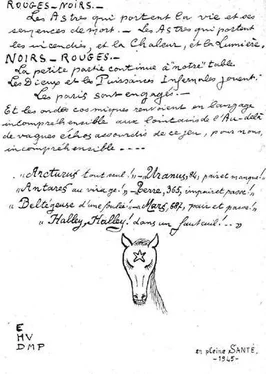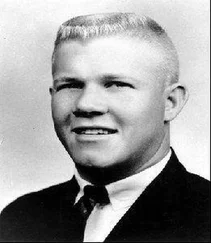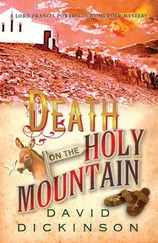The case was certainly perplexing. Unlike the case of the infamous French serial killer Henri Landru or the recent murder spree of Eugen Weidmann, it was not clear how exactly Petiot or the murderer had either killed or disposed of his victims. There was no sign of stabbing or physical blows, and there was no blood found on the bodies of the victims or in the basement. As the journalist Jacques Perry put it, there were many bodies, but no signs of a murder.
ON the morning of March 13, a saleswoman at the department store Grand Magasins du Printemps on Boulevard Haussmann contacted the police to tell her story. “I should have been killed this afternoon at three o’clock,” she said. Based on a referral from her pharmacist, she claimed to have consulted Petiot about a sore wrist on the afternoon of March 11. Petiot, she thought, looked more like a mason than a medical doctor, and his suit was supposedly stained with lime.
“A shiver ran down my spine,” she claimed, describing her unease as the physician, staring intensely at her, touched her wrist to examine it. “His black eyes,” she said, “bored into me with such impertinence that I thought he was mad.” Petiot allegedly X-rayed her hand, diagnosed a sprain, and told her that her delicate bones needed more calcium. He prescribed treatment. But as he did not have the necessary equipment at his office, he asked her to consult a “special clinic.” The address was 21 rue Le Sueur.
Although it was not easy to sift out the valuable pieces of information in the barrage of rumors and allegations already coming to his attention, Massu now had many leads. The chief priority, of course, was locating the physician. The obvious place to check was the forwarding address posted on the front door at rue Le Sueur: 18 rue des Lombards, Auxerre, just under one hundred miles to the southeast, in the central Burgundian region of Yonne. In addition, examining the note, Massu learned that there had originally been a different address—one that had been removed and then replaced, in a different handwriting. The original was 55 or 56 rue du Pont, Auxerre.
Massu asked one of his assistants to make the travel arrangements. Trains ran less regularly during the Occupation, only twice a week to Auxerre, and the next one did not leave for a few days. But Massu obviously did not want to wait. He called a friend in the garage of the préfecture de police and obtained car number 3313 and gasoline for his trip, which, in the strict rationing system, was not always an easy prospect even for the head of the Brigade Criminelle. The brigade secretary and two inspectors joined him. By six o’clock that morning, they were on the road.
Massu was still trying to figure out how the murderer selected his victims, lured them into the town house, and, as he imagined the terrifying scenario, pulled out a long syringe to deliver a deadly injection. The killer then chopped up the bodies, disposed of the internal organs, and dropped the remaining debris into the lime pit, which would further dehydrate the bodies and make them easier to burn. Massu’s hypothesis sounded, as he put it, as “horrible and icy as any story of Edgar Allan Poe.”
Massu needed to find out how and when the doctor obtained his lime, and who had helped him. Clearly the doctor—or whoever the murderer was—could not have killed so many people on his own. How, too, could he have escaped detection by his neighbors? Massu was nowhere near understanding the case, let alone finding the killer and the evidence to convict him. For the first time in his career, the commissaire was having trouble sleeping.
“Boss,” the secretary asked in the car, “is it true, as it’s said, that some engravings of the devil were found in the office at rue Caumartin?”
“Yes,” Massu said. “There was better than that, or worse, depending on your view.” The commissaire did not elaborate more than mentioning some “bestial and smutty drawings” found in Petiot’s office.
“Is the doctor a drug addict?” another inspector wondered, picking up on another rumor.
“It’s almost certain,” Massu answered, probably too hastily. Drugs were too easy an explanation for how a respectable physician by day could become a monster at night.
Before reaching Auxerre, the investigators stopped at Villeneuve-sur-Yonne, the town where Dr. Petiot had served as mayor. Chief Inspector Marius Battut and Inspector Rochereau went first to the murder suspect’s former home at 56 rue Carnot. The current occupant, another physician, told them that he had lived there since July 1934. He had seen Dr. Petiot only once and had never had any dealings with him. The home owner, Battut summed up in his report, “did not want to provide any interesting information.”
The gendarmes at the Villeneuve-sur-Yonne police department, however, were more helpful. They told the officers of the Brigade Criminelle that Petiot suffered from a “very bad reputation.” During his term as mayor, he had been suspected of committing a number of thefts, including cans of oil and gasoline. One time, he was charged with stealing electricity by tampering with the meter attached to his property. What’s more, the brigade inspectors learned that another one of his suspected lovers had died in mysterious circumstances.
ON March 11, 1930, fourteen years to the day before the discovery at rue Le Sueur, Armand Debauve, the owner of a dairy cooperative outside Villeneuve-sur-Yonne, was having a drink at Frascot’s bistro. About eight o’clock that evening, a villager arrived with news that his dairy was on fire. Debauve rushed home to find his house in flames and his wife, firefighters informed him, sprawled out dead on the kitchen floor, her head covered in blood.
It did not take long for detectives to conclude that the fire had been intentionally set, and the victim, forty-five-year-old Henriette Debauve, had received a series of blows to her skull. The size of the wounds suggested that the weapon had been a hammer. Indeed, of the handful of objects missing from the property, one of them was a hammer.
Not long afterward, neighbors reported seeing Mayor Petiot drive by the ruined farmhouse with his wife. He had come, eyewitnesses first deduced, to express his condolences to the family of the victim. For an experienced doctor and veteran of the First World War, however, he seemed strangely uneasy, even nervous. Then, to further surprise, the mayor returned to his car and drove into the town of Sens to take his wife to the cinema.
Petiot certainly knew the victim. The two had been introduced several years before by “Old Man Frascot”—the same man who had introduced Petiot to his previous lover, Louisette Delaveau. Frascot, moreover, had joined the doctor and Henriette for dinner a few times, and they had appeared to hit it off. She became his patient, and, as police investigators later believed, almost certainly his lover.
There were many curiosities about this case. The fire occurred on a Tuesday evening, when Debauve’s husband went out to the bistro. This was also the second Tuesday of the month, the day before the dairy paid the farmers for milk. The safe had been forced open, but no money had been found there, because Debauve had hidden it earlier that day under the kitchen cabinet.
Interestingly, too, the police had uncovered a clear set of fingerprints on an iron engraving tool that had been removed from the shed and probably had been used to pry open the safe in the bedroom. Fingerprints were taken of the dairy’s twenty-one employees, but there was no match. When Petiot was asked for fingerprints, he refused. Robert Seguin, his successor as mayor in Villeneuve-sur-Yonne, later described the uproar when Petiot finally complied. He lost his temper and ripped out a page from the town’s official register ( registre officiel des déliberations ). “Furiously, he pressed his fingers into the ink himself and affixed his fingerprints onto the legally inviolable register. Then he threw it on the table saying, ‘Do what you want. You’ll see that it will not get you anywhere.’ ” He stormed out of the room, slamming the door.
Читать дальше












